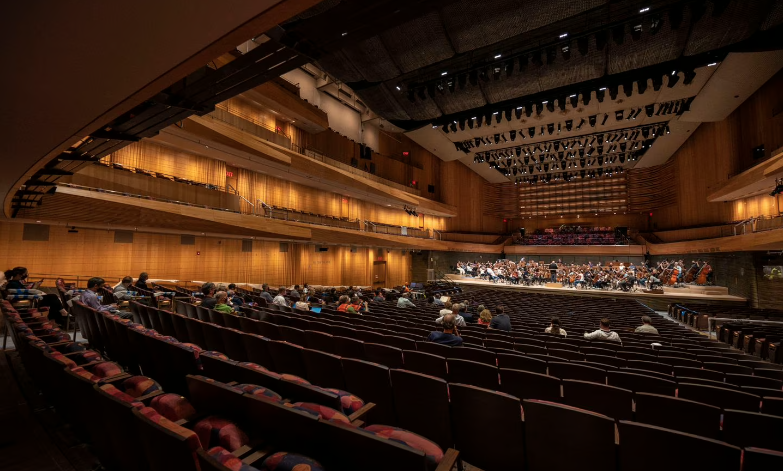Boston Globe: Tales of two cities (and their orchestras)

For more information, please contact:
Andrea Chin, Communications Director
Email: achin@dsai.ca
Gary McCluskie, Principal
Email: gmccluskie@dsai.ca
Diamond Schmitt's design of David Geffen Hall is featured in an article by Jeremy Eichler for The Boston Globe. The piece outlines the music critic's thoughts on visiting the New York Philharmonic’s new home — and why having a smaller second performance space, like David Geffen Hall's Sidewalk Studio, could be a game-changer for the Boston Symphony Orchestra (BSO).
In mid-February, I caught an invigorating double bill at Geffen Hall, a two-part event led by the brilliant conductor and composer Esa-Pekka Salonen, currently music director of the San Francisco Symphony. I had attended portions of the grand opening festivities back in the fall, but was eager for a chance to see the hall in action on a more typical week — not just its splashy new main auditorium but also an intriguing new second space called the Sidewalk Studio.
The example and potential of this smaller second space in particular seemed relevant to the BSO’s own ongoing evolution. Around the country, orchestras large and small have been adding flexible smaller spaces in the spirit of New York’s new studio, and in the process, opening up a vast range of creative possibilities with the potential to enliven and transform entire seasons.
The new $550 million Geffen Hall is built within the shell of the old Avery Fisher Hall, whose footprint remains largely unchanged. What first catches the eye is the public lobby space, now enclosed by glass walls that allow anyone passing by to see directly into the building. On the warm opening weekend this fall, the orchestra left open the new enormous garage-style door into the lobby, creating a seamless flow between the hall and the city at large.
That sense of invitation and openness is further underscored by an enormous wall of screens, also visible from outside, onto which the orchestra’s subscription concerts are now streamed. With or without tickets, any member of the public can walk in, pick a spot to sit, and take in a performance [...].
Geffen Hall emphasizes a different set of priorities. Under the leadership of Gary McCluskie and Diamond Schmitt Architects, the old auditorium has been completely overhauled, with the formal proscenium gone and 500 seats removed. The orchestra is now positioned 25 feet further into the hall, and audience seating has been reconceived in the surround-style “vineyard” model used in the Berlin Philharmonie and the Los Angeles Philharmonic’s Disney Hall, the latter clearly being an inspiration for Geffen as a whole. Groups of seats surround the stage on all sides, including behind the orchestra. The ensemble plays, quite literally, in the middle of its public.
Overall the sound in the hall was bright, bold, and alive, if not quite yet ideally balanced. Orchestras take time to adjust their own playing to any new space, and the acousticians themselves will continue making adjustments. It’s already a major step forward, and I predict it will only improve from here.
The second part of the evening’s doubleheader felt no less significant. At 10 p.m., rather than simply drifting off into the night as the BSO’s public has no choice but to do, a portion of the audience relaxed in the lobby with drinks until 10:30, at which point they assembled for what the orchestra calls Nightcap, one of several series now taking place in Geffen’s Sidewalk Studio.
Around the country, orchestras large and small have been adding flexible smaller spaces in the spirit of New York’s new studio, and in the process, opening up a vast range of creative possibilities with the potential to enliven and transform entire seasons.
Located in the northeast corner of the building, which had previously held a drab conference room, the studio is a sleek, intimate recital space with floor to ceiling windows looking onto Broadway and 65th Street. The hall’s activities, as with the lobby screens, are once again visible to the city around it.
Read the full article here.